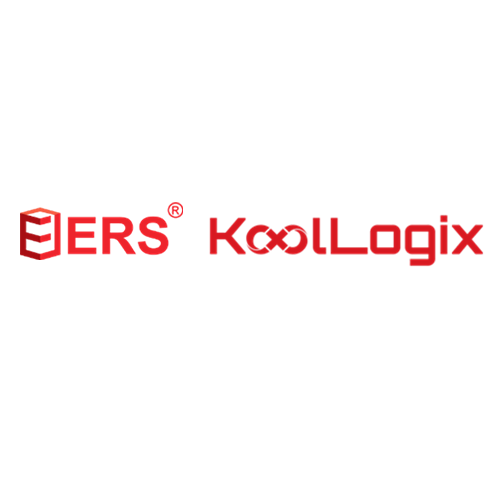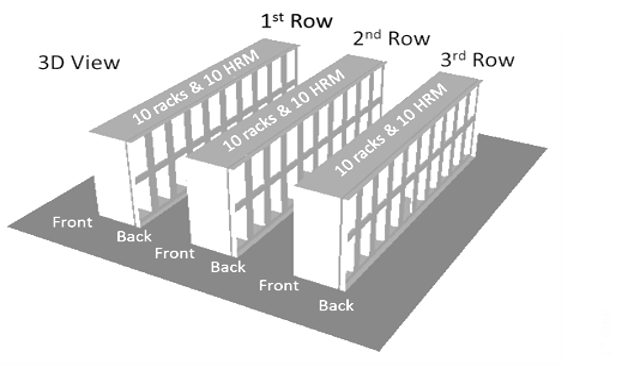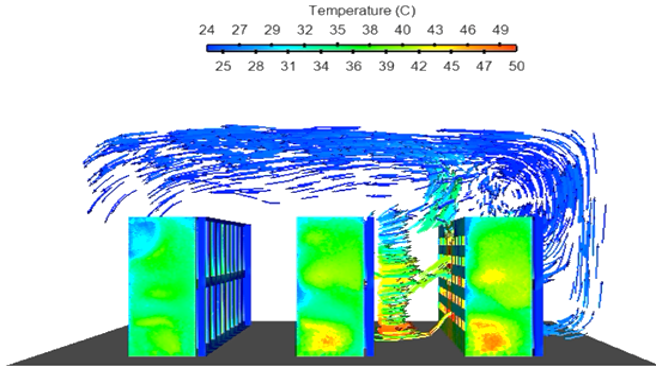Energy Efficient Cooling Solution for Sustainable Data Centres

ERS Industries Pte Ltd (ERS) is a Singapore-based data centre solutions company, focusing on the state-of-the-art technology that meets today's Green Data Centre and Secured Data Centre requirements. Operating since 1995, ERS has been offering its own brand of solutions from white space capacity optimisation, critical environment analysis and consulting, last mile physical access security, and low-power passive heat removal and on-demand cooling.
Data centres play an important role as the infrastructure backbone of Singapore’s digital economy. Due to ever-increasing computing demand such as emerging technologies in 5G, Artificial Intelligence (AI) and Machine Learning, data centres consumed vast amounts of energy when in operations. Geographically, Singapore also faces lower disaster risk (i.e., earthquakes, tsunamis) and higher resilience due to its robust infrastructure, hence boosting local data centres usage and lowering disaster resilience spending as compared to neighbouring countries with higher disaster risks1.
These data centres accounted for about 7 per cent of Singapore’s total electricity consumption in 20202, which amounted to an estimate of 35 to 40 per cent of the total power required to run a data centre3. One of the contributors to the energy usage comes from the computer room air conditioning (CRAC) unit. As a solution to maintain the temperature in a data centre, many deployed CRACs tend to overcompensate by avoiding risky hot spots within the server rack housing where exhaust heat from these computers is trapped. This could potentially accumulate higher utility costs to generate cooler air which could worsen with the advent of more powerful CPUs for faster data processing, leading to higher power usage and heat generation.
In 2019, the Singapore government informed the industry of a temporary pause on the development of new data centres4 to ensure their growth in a sustainable manner and reduce carbon footprint. To further address global climate change, Singapore also aims to halve its 2030 peak greenhouse gas emissions by 2050. Hence it poses a business opportunity for ERS to develop innovative technologies to reduce data centres’ energy consumption.
To support sustainable digital infrastructure and the need for more effective cooling solutions, A*STAR’s Institute of High Performance Computing (IHPC) partnered with a local SME, ERS and its spin-off, KoolLogix Pte Ltd to co-develop an energy-efficient cooling system – KoolLogix. KoolLogix is a novel cooling solution that uses phase change physics, aiming to reduce data centres’ energy consumption to support Singapore’s expansion into the digital economy while reducing carbon emissions.
A virtual digital twin model was developed to evaluate the performance of KoolLogix’s Heat Removal Module (HRM). Leveraging IHPC’s computational fluid dynamics (CFD) expertise, numerical simulation results and experimental data were cross-validated to ensure high accuracy of the virtual twin, demonstrating the viability of using digital models to predict physical HRM performance. Through understanding the underlying physics, the team could optimise the design of KoolLogix’s HRM via the digital model to achieve better effectiveness and efficiency.
Five innovative features of the KoolLogix cooling system include:
- Remove lingering heat energy from the ambience
- Redeploy waste thermal energy discharged by computer servers within the server rack to activate and promote the refrigerant boiling in KoolLogix cooling system
- Install KoolLogix cooling system near the heat source without being intrusive to the computer servers (as compared to liquid cooling)
- Integrate KoolLogix’s HRM together with the modular KoolContainment housing structure for shared cooling
- Avoid using compressors or pumps and mitigate mechanical device failings
As part of A*STAR’s talent secondment scheme for local enterprises known as T-Up, Dr Li Hongying, a researcher from IHPC was seconded to ERS in 2019. She developed an advanced computational fluid dynamics model to simulate scenarios and speed up product design for the KoolLogix cooling system. Dr Li was subsequently awarded the T-Up Emerging Talent Award at SME Day 2020@SWITCH5.

Fig 1: Computational domain

Fig 2: Simulation results for a cooling redundancy scenario study
IHPC’s extensive knowledge of modelling and simulation capabilities supported the scientific understanding of thermal fluid physics, exploration of multiple design options and more, utilising theoretical thermodynamics and heat transfer knowledge for rapid analysis. These could potentially lead to shorter design and R&D cycles and accelerate speed-to-market on new product launches.
In partnerships with Jurong Town Council (JTC) and local SME companies (ERS Industries & its spin-off KoolLogix Pte Ltd, CDC Data Centre operator), an example of deployment of the KoolLogix cooling system was in a customised R&D site supported by JTC6, utilising their estates as living testbeds for game-changing innovations and sustainability technology adoption. The testing and evaluation results have shown that KoolLogix helped CDC Data Centre to attain a PUE (Power Usage Effectiveness) of 1.29, as compared to the Asia Pacific average metric of 1.697. The reduction of 0.4 PUE implied a potential S$350k annual saving of utility bill for CDC, which is comparable to 258 cars off the road for their CO2 emissions annually or 92,000 trees of CO2 absorption annually.
Built as a modular and scalable system, the KoolLogix technology has proven to be cost-effective and eliminates the need for:
- Raised floorings
- Expensive precision row cooling equipment
- Booster fans
- Coolant/refrigerant pump/compressor delivery system
- Use of aisle containment systems
The successful demonstration of this collaborative effort also gives confidence to other end users for mass deployment of KoolLogix innovative cooling solution across data centres in Singapore, Indonesia and other regional markets. This public-private partnership is also a testament to A*STAR’s efforts to encourage businesses to co-innovate and conduct local test-bedding for more business opportunities.
In the next project phase with KoolLogix, the team will be studying the use of alternate refrigerants for its systems to further fulfil the company’s mission of helping to promote environmental sustainability and greenhouse gas reduction.
References:
[1]: Impact of disasters and disaster risk management in Singapore: : A case study of Singapore’s experience in fighting the SARS epidemic
A*STAR celebrates International Women's Day

From groundbreaking discoveries to cutting-edge research, our researchers are empowering the next generation of female science, technology, engineering and mathematics (STEM) leaders.
Get inspired by our #WomeninSTEM
.png?sfvrsn=ff199933_15)